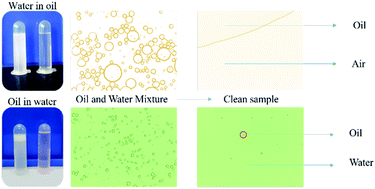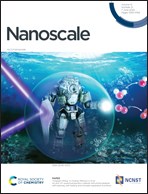Eco-friendly and durable PCPS nanoparticles for the effective separation of oil–water emulsions
Abstract
Oil pollution is one of the main environmental problems that is attracting increasing attention from people. In this study, a new composite, namely a PNIPAm-Clay-γPGA-SiO2 (PCPS) nanomaterial, was prepared through chemical modification. The material exhibited excellent separation efficiencies for both oil-in-water (O/W) and water-in-oil (W/O) emulsions. The maximum separation efficiency of the W/O emulsion reached 98.70%, while that of the O/W emulsion was 99.23%, and the average separation fluxes were 107.44 L m−2 h−1 and 1529.34 L m−2 h−1, respectively. The superhydrophobicity of the PCPS nanoparticles could be maintained under strong acid/alkali conditions for over 30 days. The high separation efficiency could be maintained even after 7 cycles, indicating the long-term availability of the material. Furthermore, the PCPS nanoparticles showed excellent biocompatibility due to the presence of γ-polyglutamic acid (γPGA) and poly(N-isopropylacrylamide) (PNIPAm). The properties of strong acid/alkali and thermal stabilities, recyclability, and biocompatibility gave the material great potential for applications.



 Please wait while we load your content...
Please wait while we load your content...